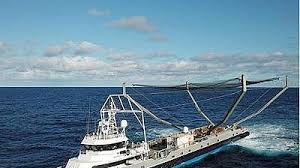
Breaking News
 Tucker Carlson on Why He Interviewed Nick Fuentes and What He Wanted to Convey To Him
Tucker Carlson on Why He Interviewed Nick Fuentes and What He Wanted to Convey To Him
 The Global War on Christianity Just Got a Whole Lot Worse, and Ted Cruz Doesn't Care
The Global War on Christianity Just Got a Whole Lot Worse, and Ted Cruz Doesn't Care
 BREAKING EXCLUSIVE: The Globalists Are Trying To Trigger Stock Market Crash Worse Than 1929...
BREAKING EXCLUSIVE: The Globalists Are Trying To Trigger Stock Market Crash Worse Than 1929...
 ICE's 'Frightening' Facial Recognition App is Scanning US Citizens Without Their Consent
ICE's 'Frightening' Facial Recognition App is Scanning US Citizens Without Their Consent
Top Tech News
 HUGE 32kWh LiFePO4 DIY Battery w/ 628Ah Cells! 90 Minute Build
HUGE 32kWh LiFePO4 DIY Battery w/ 628Ah Cells! 90 Minute Build
 What Has Bitcoin Become 17 Years After Satoshi Nakamoto Published The Whitepaper?
What Has Bitcoin Become 17 Years After Satoshi Nakamoto Published The Whitepaper?
 Japan just injected artificial blood into a human. No blood type needed. No refrigeration.
Japan just injected artificial blood into a human. No blood type needed. No refrigeration.
 The 6 Best LLM Tools To Run Models Locally
The 6 Best LLM Tools To Run Models Locally
 Testing My First Sodium-Ion Solar Battery
Testing My First Sodium-Ion Solar Battery
 A man once paralyzed from the waist down now stands on his own, not with machines or wires,...
A man once paralyzed from the waist down now stands on his own, not with machines or wires,...
 Review: Thumb-sized thermal camera turns your phone into a smart tool
Review: Thumb-sized thermal camera turns your phone into a smart tool
 Army To Bring Nuclear Microreactors To Its Bases By 2028
Army To Bring Nuclear Microreactors To Its Bases By 2028
 Nissan Says It's On Track For Solid-State Batteries That Double EV Range By 2028
Nissan Says It's On Track For Solid-State Batteries That Double EV Range By 2028
SpaceX Almost Caught Part of a Rocket Using a Boat and a Giant Net

Early Thursday morning, a SpaceX Falcon 9 rocket lifted off from Vandenberg Air Force base carrying two telecommunication satellites to Low Earth Orbit. Those satellites are testing the viability of Starlink, Elon Musk's plan to cover every inch of the Earth with satellite broadband. It's the first step toward making this highly ambitious (and historically ill-fated) project a reality, but the launch was also remarkable for what happened after the satellites were deployed in orbit.
Off the California coast, a boat called 205-foot boat called Mr. Steven, owned by a company called SeaTran, attempted to catch the Falcon 9's fairing (the casing on the top of the rocket that holds its payload) as it fell back to Earth. According to a Tweet from Musk, the boat missed the fairing "by a few hundred meters."
"Fairing landed intact in the water," Musk tweeted. "Should be able to catch it with slightly bigger chutes to slow down descent."

 Carbon based computers that run on iron
Carbon based computers that run on iron

